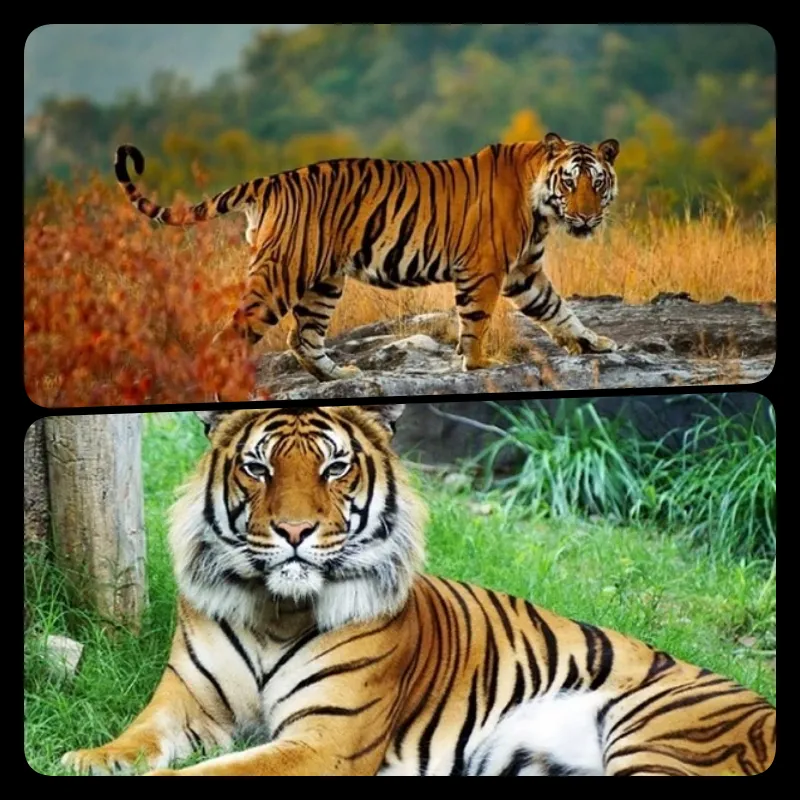
Why is the Tiger, with Its Bright Orange Coat, Still the Apex Predator of the Jungle?
Quick, powerful, with incredibly strong jaws and an exceptional hunting instinct—the tiger has all the traits to be the most formidable predator in the jungle. However, one might wonder about its striking orange coat with black stripes, which seems to contrast sharply with the green of the forest. Why would nature give such a skilled hunter such a vivid and seemingly conspicuous coat? Wouldn’t this make hunting more challenging?

This question puzzled scientists for a long time. The tiger’s bright coat appears out of place for a predator that relies on stealth. But recent research has provided a simple yet fascinating answer: We cannot apply human perception of color to the natural world.
Humans perceive the world differently from animals. Colors and patterns in the animal kingdom serve various purposes—some help attract mates, while others warn predators of toxicity, like in snakes and frogs. For ambush predators like tigers and lions, the ability to “blend in” with their surroundings determines the success of their hunts. So why orange?
To humans, orange is a color that stands out. It’s used for safety vests, traffic signs, and anything that needs to be seen easily because our eyes, which are trichromatic, are tuned to detect red, green, and blue, similar to some primates.
However, most land mammals, including the tiger’s prey—deer, horses, and other animals—have dichromatic vision. Their retinas have cone cells for only two colors: blue and green. This means they cannot distinguish between red and green shades, rendering the tiger’s orange coat as a shade of green, effectively camouflaging it in the forest.
A recent study from the University of Bristol, led by Dr. John Fennell, utilized computer models to simulate the vision of different animals in their natural habitats. The results showed that for animals with dichromatic vision, the tiger’s orange fur blends in perfectly with the forest environment.
Dr. Fennell further tested this theory by placing a red object against two different backgrounds—a forest and a semi-desert—then observing how quickly people could detect it under conditions simulating both dichromatic and trichromatic vision. The findings revealed that while the object was easily spotted with trichromatic vision, it was much harder to detect with dichromatic vision.
But why don’t tigers have green fur for even better camouflage? The simple answer is that they cannot. Most mammals, including tigers, lack the biochemical mechanisms to produce green fur. The only mammal with naturally green fur is the sloth, and this is due to algae growing in its fur, not pigmentation.

This leads to another intriguing question: Why haven’t prey animals, like deer, evolved to see in three colors? Although some studies suggested that colorblind soldiers were better at spotting camouflaged enemies during wars, this theory doesn’t hold up under laboratory conditions. Individuals with trichromatic vision consistently outperformed those with dichromatic vision in detecting camouflage. Therefore, this remains an unsolved mystery.






